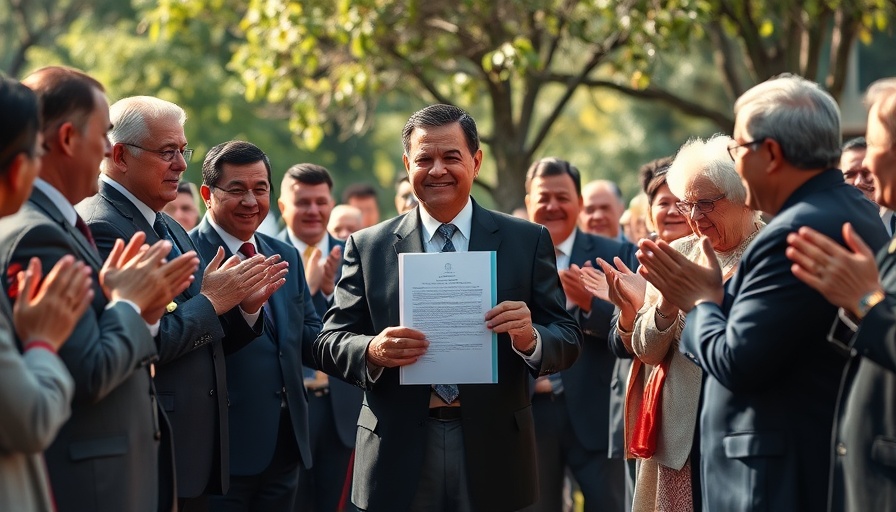
Trump Celebrates Signing of Major Spending Bill Amid National Festivities
On July 4, 2025, President Donald Trump celebrated America's Independence Day with a significant legislative triumph, signing a contentious spending bill labeled the "One Big Beautiful Bill Act" during the White House's military family picnic. The signing, held amidst flyovers of military aircraft, served as a dramatic backdrop for Trump to claim victory over his administration's high-profile fiscal initiatives.
Impact of the Spending Bill: A Look at Key Provisions
The newly signed legislation is set to introduce sweeping changes, including a $1.7 trillion reduction in spending and the largest tax cut in American history. However, it does so by implementing substantial cuts to crucial government benefits, particularly Medicaid. As Trump stated during the signing, "We're cutting waste, fraud, and abuse; you won't even notice the impact." Yet, this remark raises questions regarding how such cuts can be implemented without affecting vulnerable populations.
Political Reactions and Controversies
The bill's passage predominantly divided Congress, with some Republican members expressing concerns about its effect on the national debt and potential backlash from constituents. Critics, including several Democrats, have pointed to the significant implications for healthcare and social safety nets, igniting debates on fiscal responsibility versus social responsibility.
Future Implications of Trump's Spending Bill
As Trump's administration pushes forward with its financial strategy, the true effects of this legislation on the American economy and public services are yet to unfold. Legal experts and economists are keenly watching how these sweeping changes will impact not only the federal budget but also individual states that heavily rely on federal funding for healthcare and welfare services.
This recent legislative milestone at a patriotic celebration emphasizes the intertwining of politics and national identity, raising critical questions about the direction of U.S. fiscal policy.
 Add Row
Add Row  Add Element
Add Element 



Write A Comment